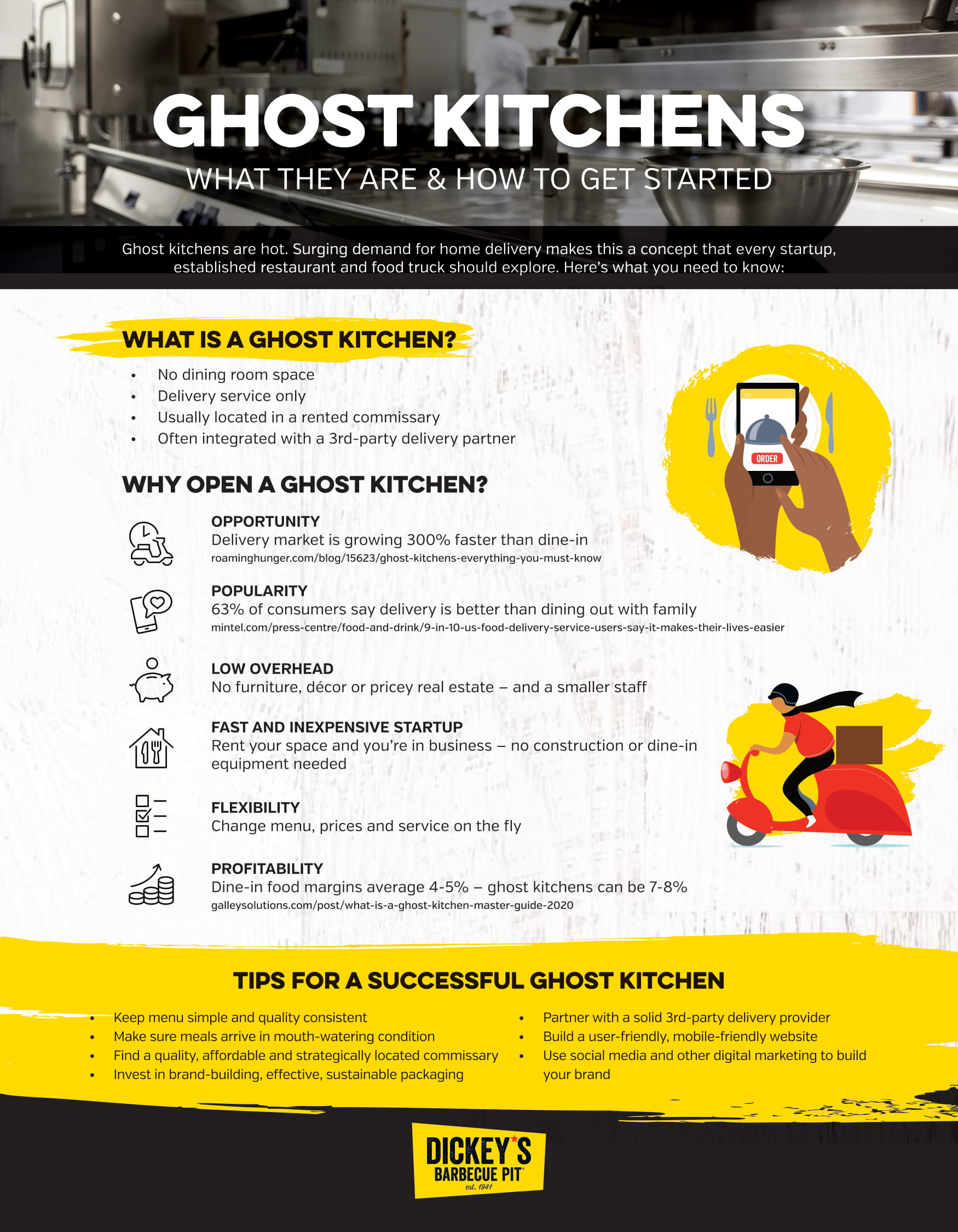 2020 had the largest impact on the restaurant industry in recent years. It was quite the challenging time, to say the least. Regardless of the number of setbacks faced by those within the industry, there was one aspect of the restaurant experience that continued to thrive throughout the pandemic: restaurant-to-consumer delivery.
2020 had the largest impact on the restaurant industry in recent years. It was quite the challenging time, to say the least. Regardless of the number of setbacks faced by those within the industry, there was one aspect of the restaurant experience that continued to thrive throughout the pandemic: restaurant-to-consumer delivery.
This newfound priority for delivery opened up the doors for a new innovation in the industry. Ghost kitchens. These spaces disregard everything you know about the traditional dine-in experience. No tables dressed with menus and wrapped utensils. No wait staff to help and assist you as you enter. These spaces are barely even habitable, ranging from 300-800 square feet. They’re meant to strictly prepare orders for customers and in some cases double as a space for a restaurant’s delivery team to operate out of. Assuming a restaurant doesn’t possess their own delivery teams, they hand the orders off to a third-party service to deliver for them.
It may sound silly, but evaluations of this model have indicated that it could be worth an estimated $1 trillion by 2030.
This isn’t the first time a typically exclusive physical experience turned digital. Remember how Amazon impacted the bookstore space? Transforming the foundation of the industry from physical to digital is what ghost kitchens hope to accomplish. Only these models aren’t meant to drive all surrounding restaurants out of business. Quite the contrary, actually. Ghost kitchens work to enable local restaurants and allow them to stretch their wings a bit further to reach new customers in their area.
If you’re an aspiring restaurant owner, or a long-standing restaurant manager unaware of what a ghost kitchen is, the infographic accompanying this post is an excellent resource for understanding the ins-and-outs of this innovative trend. In fact, if you’re new to the industry, establishing a ghost kitchen rather than a dine-in location might be your best bet at achieving some form of success. All that’s required to beginning your ghost kitchen is finding a rentable space in your area that’s able to support the kitchen equipment you’ll need to prepare your customers’ orders.
No matter your standing in the industry, whether you’re a start up or a local staple that’s been around for decades, it’s hard to deny the advantages of a ghost kitchen. Your guests are no longer forced to dine-in at your restaurant to enjoy your cuisine. Not to mention, assuming your digital marketing efforts are proving to be successful, you may be able to reach even more customers than you previously were able to with only a dine-in location. Less reliance on a physical location also means your management and scheduling efforts can be simplified. Your operating and overhead costs would also reduce significantly. The benefits to be considered are seemingly endless.
With that being said, though, it’s hard to determine whether or not restaurant-to-customer delivery will remain as popular as it has been as a result of pandemic restrictions. However, there are some precursors that would indicate it will. The first being the convenience. Regardless of the additional costs associated with food delivery, consumers continue to purchase delivery as it fits best within their schedule. Assuming those schedules don’t change, why would food delivery ever fall out of a person’s priority? The second is the younger generations’ continuing shift towards digital preference. Digital over physical is a defining trait of most of the younger generation and seeing as though this makes up a large portion of restaurants’ target demographic, it’s hard to imagine delivery won’t continue to be successful.
For additional information on how to transform your restaurant space into a ghost kitchen, be sure to check out the infographic coupled alongside this post. Courtesy of Dickey’s Barbecue Pit Franchise.

